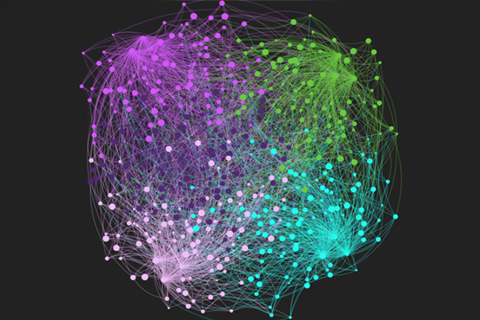Scientific research often yields vast amounts of data. This is particularly true in computational biology, where a large experiment might examine interactions among dozens or hundreds of genes and the proteins they produce. Prof. Brenda Andrews, director of the Donnelly Centre for Cellular and Biomolecular Research at U of T, says biologists typically represent this information visually using a network graph, in which each gene is identified as a “node” on a network and is connected by a line or “edge” to the genes and proteins it interacts with.
This visualization technique works well for a small number of nodes, but when thousands of interactions are displayed in one diagram, the result, from a distance, can look like a hairball. Andrews says she’s not fond of the term: “To me, it seems derogatory and underplays the importance of the information in these networks.” She prefers “infoball.”






